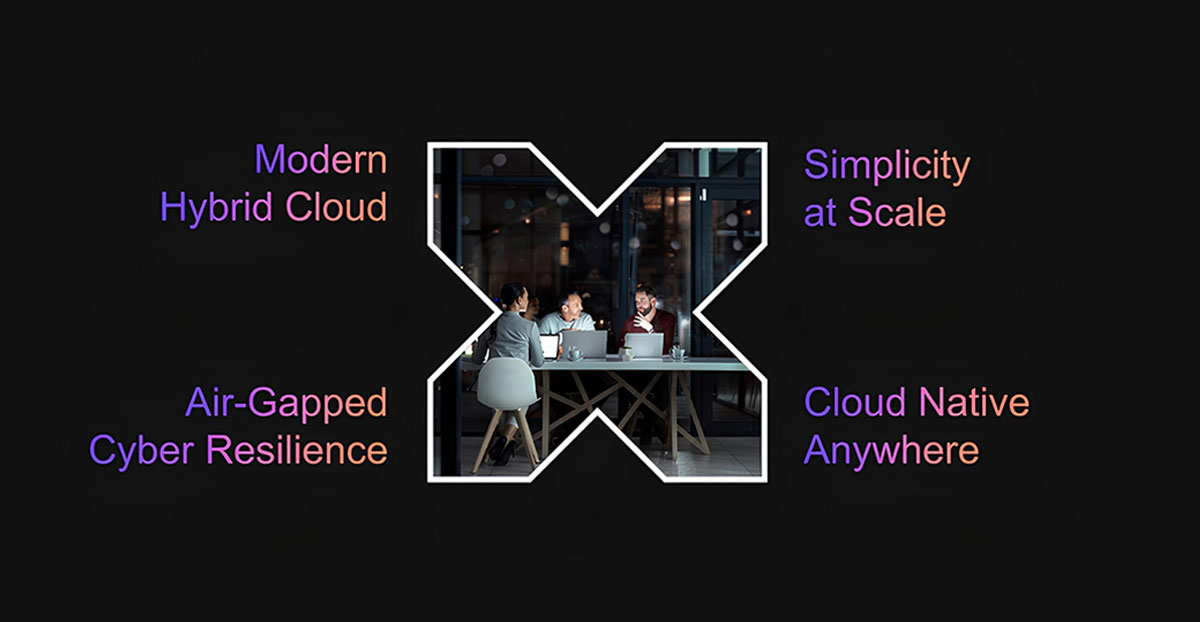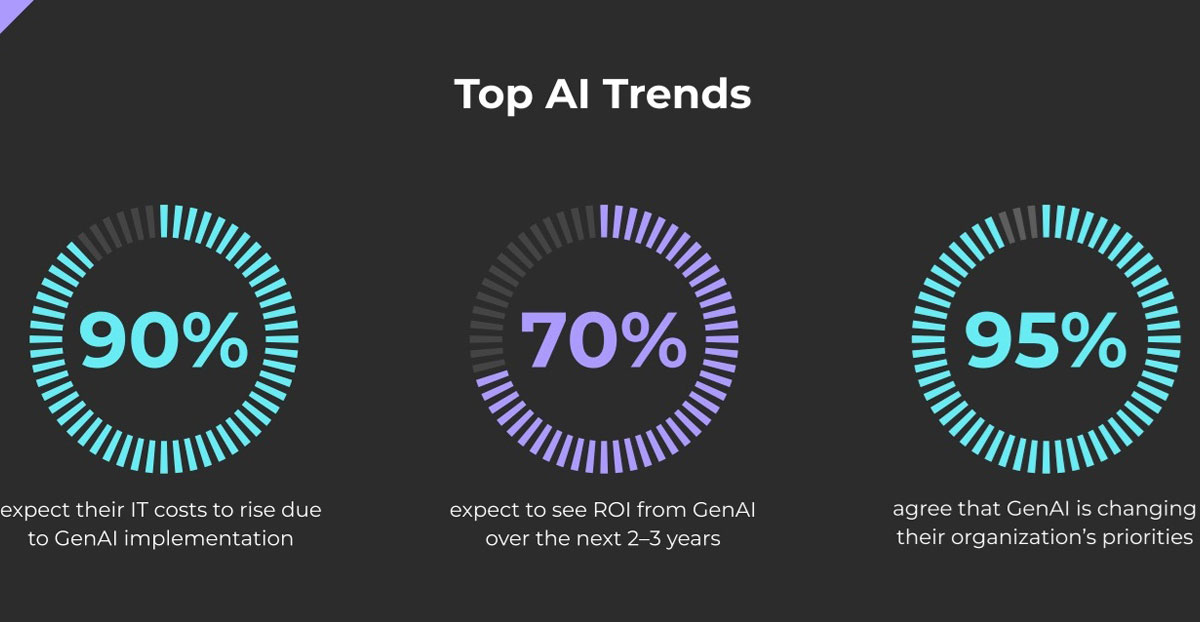Nutanix Announces Key Innovations for Enhanced Hybrid Cloud Efficiency, Storage, Security, Cloud Native Operations, and AI Adoption
At its annual .NEXT conference, Nutanix introduced several new features and strategic partnerships designed to boost efficiency in hybrid cloud environments, deliver enterprise-grade Kubernetes® management, leverage external storage, strengthen security, and advance AI adoption. Attendees learned how Nutanix is expanding its future-ready platform and partner ecosystem to help organizations modernize infrastructure, run both virtualized and containerized apps and data anywhere, and innovate with agentic AI.
Mr. Noppadol Punyatipat, Country Manager, Nutanix (Thailand) said, “Technology innovation is happening faster than ever, with tools like generative AI reshaping enterprise IT strategy, infrastructure and security. Working with our partners, we’re helping organisations unlock their potential in this era. The updates we shared at .NEXT underscore Nutanix’s commitment to empowering Thailand’s businesses with a platform to run their apps and data anywhere, accelerating innovation with a complete, enterprise-ready cloud-native solution across on-premises, hybrid, and multicloud environments. Our future-ready, modernized platform, offers a simpler path to enterprise AI and seamless migration to the cloud. The future starts now with Nutanix.”
Nutanix Enables Agentic AI Anywhere with Latest Release of Nutanix Enterprise AI
Nutanix announced the latest version of Nutanix Enterprise AI (NAI), featuring deep integration with NVIDIA Enterprise AI, including NVIDIA NIM™ and NVIDIA NeMo™ framework. This release is aiming to accelerate the deployment of Agentic AI applications in the enterprise by simplifying the building, running, and management of models and inferencing services across various environments. The updated NAI offering extends a shared model service methodology, streamlining resources and models for multiple applications, and includes a centralized LLM model repository designed for secure and private connections to generative AI applications and agents.
Nutanix and Pure Storage announced a partnership to provide a deeply integrated solution for mission-critical workloads. This collaboration combines Nutanix Cloud Infrastructure, powered by the Nutanix AHV hypervisor and Nutanix Flow virtual networking and security, with Pure Storage FlashArray over NVMe/TCP. The integrated solution offers flexibility, security, and scalability, designed to meet the high-performance demands of modern IT environments, including AI applications. This partnership comes at a crucial time as IT leaders navigate the evolving virtualization market to find a solution that will enhance operational effectiveness.
Nutanix Announces Cloud Native AOS to Extend Enterprise Value to Kubernetes Anywhere
Nutanix introduced Cloud Native AOS, a new solution that extends Nutanix enterprise storage and advanced data services to hyperscaler Kubernetes® services and cloud native bare metal environments without requiring a hypervisor. This innovation enables developers to build portable cloud native applications with mission-critical data resiliency across various infrastructures. Cloud Native AOS simplifies day two operations for Kubernetes applications and consolidates storage management across the distributed hybrid cloud, enhancing data protection, replication, and restoration.
Nutanix Introduces Nutanix Cloud Infrastructure for External Storage
Nutanix is pleased to announce the general availability of NCI Compute, enabling customers to leverage external storage with Nutanix Cloud Platform. The first supported solution, Dell PowerFlex, is designed for mission-critical environments requiring high resiliency, security, scalability, and performance. This integration offers VM-centric disaster recovery, security, and automation, providing flexible deployment options. Dell PowerFlex with Nutanix Cloud Platform will be offered alongside Dell’s HCI appliance, Dell XC Plus, giving customers choice and flexibility. For PowerFlex customers, this joint solution offers an enterprise cloud platform with Nutanix AHV as a new hypervisor option for demanding environments. Additionally, Cisco and Pure Storage are expanding their partnership of more than 60 validated designs to include Nutanix in the portfolio for a FlashStack with Nutanix solution.
Nutanix Announces Public Preview of Nutanix Cloud Clusters on Google Cloud
Nutanix announced the public preview of Nutanix Cloud Clusters (NC2) on Google Cloud, expanding workload mobility and hybrid cloud capabilities. This solution allows organizations to deploy the Nutanix hyperconverged software stack on Google Cloud Z3 bare-metal instances, enabling quick migration, app modernization, and disaster recovery. NC2 on Google Cloud integrates advanced cloud platform features like AI, Kubernetes, and database management, providing a consistent operating model across hybrid and multicloud environments. This preview program is a key milestone in the Nutanix commitment to hybrid multicloud, building on NC2’s successful support for AWS and Azure.
Nutanix Unveils Omnissa Horizon Integration on AHV for Enhanced VDI and App Delivery
Nutanix announced a partnership with Omnissa to integrate Omnissa Horizon with the Nutanix AHV hypervisor. This collaboration offers organizations more flexibility in deploying virtual desktop infrastructure (VDI) on Nutanix Cloud Infrastructure (NCI). With Omnissa Horizon running on NCI with AHV, customers can manage VDI across on-premises, private clouds, and public cloud providers through a unified platform. This integration simplifies app delivery, enhances operational efficiency, and provides a secure, high-performance desktop experience for hybrid workforces and high-security environments.
Nutanix announced a partnership with Canonical to enhance the Nutanix Kubernetes Platform (NKP) with built-in support for Ubuntu Pro. This integration simplifies Kubernetes installation and adoption, offering a trusted, enterprise-ready Linux platform for AI workloads. Ubuntu Pro provides 10+ years of security maintenance, Linux kernel vulnerability patching without system reboots, and the ability to run Linux FIPS 140 workloads. NKP customers will benefit from seamless, secure, and stable images, ensuring their systems are up-to-date and protected against vulnerabilities.
Nutanix Introduces Simplified Multi-Cluster Citrix Management on Prism Central on AHV
Nutanix announced support for multi-cluster Citrix environments hosted on the Nutanix AHV hypervisor, fully integrated with Nutanix Prism Central. This solution allows customers to manage multiple clusters of Citrix Virtual Apps and Desktops from a single control plane, simplifying operations and enhancing security. It also supports seamless integration across AWS and Microsoft Azure with Nutanix Cloud Clusters (NC2), optimizing image management and operational efficiency. This collaboration continues to empower businesses with reliable virtual desktop infrastructure solutions.
Nutanix Announces Expansion of Security Ecosystem and Simplified Compliance
Nutanix announced enhancements to its security ecosystem, integrating with key cybersecurity partners and aligning with the NIST Cybersecurity Framework 2.0. These updates include partnerships with Qualys, Tenable, CyberArk, Check Point, Palo Alto Networks, F5, Cohesity, HYCU, Rubrik, Veeam, CrowdStrike, BigID, AccuKnox, and Sysdig. The expanded ecosystem aims to provide a defense-in-depth posture across application, data, network, identity, and cloud security, simplifying compliance and supporting robust security operations for Nutanix Cloud Platform (NCP) customers.
Nutanix Rolls Out Key Updates to Nutanix Cloud Clusters
Nutanix unveiled several significant updates to Nutanix Cloud Clusters (NC2), enhancing workload mobility, disaster recovery, and operational efficiency across hybrid and multicloud environments. Key announcements include the public preview of NC2 on Google Cloud starting June 20th, new features for Multicloud Snapshot Technology (MST) supporting Azure Blob Storage, and multi-site support for MST. Additionally, Nutanix introduced Elastic SAN support for NC2 on Azure, availability of i7 family of bare-metal instances from AWS, separate gateways for each VPC in AWS, increased VLAN subnets per cluster with native networking in AWS, and new NC2 regions including Mexico Central, Thailand, Taiwan, New Zealand, and Canada.
These updates highlight the company’s dedication to simplifying cloud operations and helping businesses achieve greater resilience while driving innovation in hybrid and multicloud environments. For full details of the .NEXT 2025 announcements and for other news updates, please visit the Nutanix Newsroom and Nutanix blog page.




